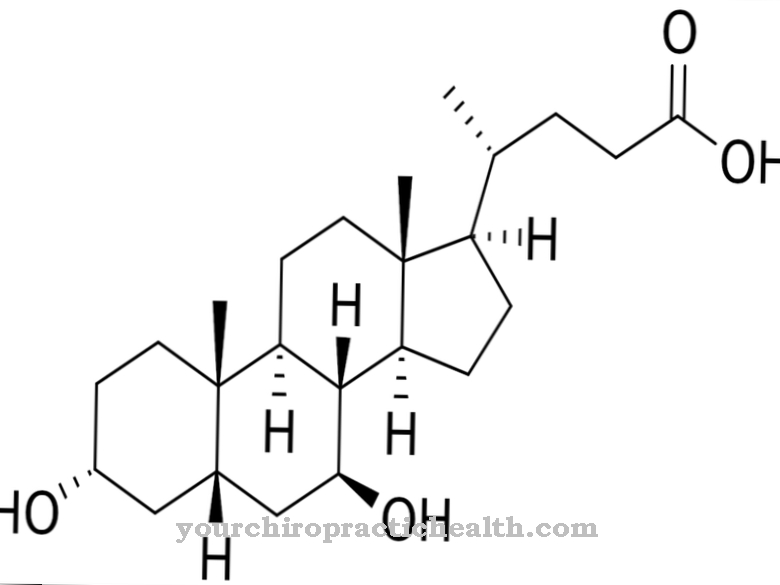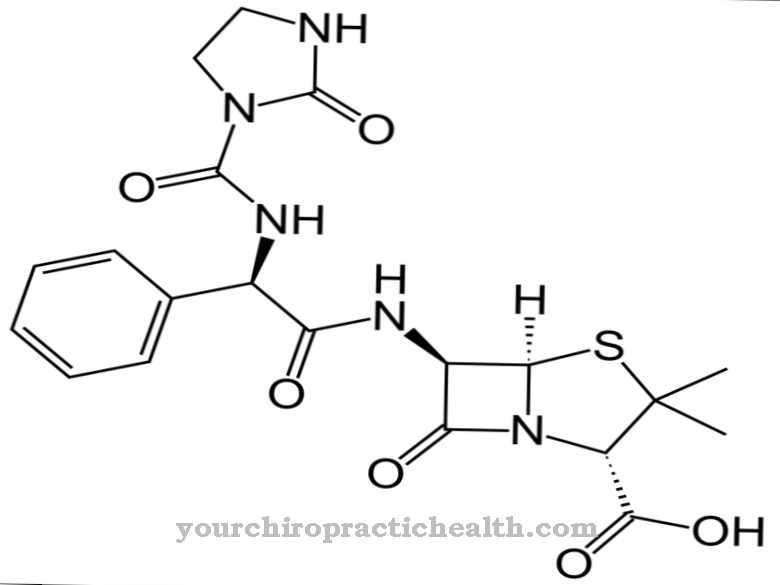Linezolid is an antibiotic belonging to the class of oxazolidinones. The drug is used as a reserve antibiotic.
What is linezolid?

The drug linezolid belongs to the quite new group of oxazolidinones. Oxazolidinones have saturated heterocyclic compounds. They inhibit protein synthesis in bacteria. In contrast to other antibiotics such as tetracyclines, macrolides and lincosamides, however, they already inhibit the beginning of the synthesis.
Linezolid is an antibiotic that is mainly used for infections with vancomycin-resistant pathogens. Linezolid is particularly effective against infections with gram-positive bacteria. It is currently the only MRSA-effective antibiotic that is available for both oral and intravenous use. The strains of the bacterium Staphylococcus aureus that are resistant to all ß-lactam antibiotics such as penicillin are referred to as MRSA. As a rule, these pathogens are multi-resistant and also have resistance to antibiotics such as quinolones, tetracyclines, erythromycin, sulfonamides and vancomycin.
Linezolid is approved for the treatment of hospital-acquired pneumonia and severe skin and soft tissue infections.
Pharmacological effect
Linezolid is an antibiotic that inhibits protein synthesis in bacteria. During protein biosynthesis, living things translate into proteins. Protein biosynthesis is essential for the regeneration of proteins in cells. Without the production of proteins, gene expression is not possible. This also means that the cells can no longer multiply without protein biosynthesis. You can't grow any further either.
Linezolid inhibits protein synthesis in bacteria right from the start. To do this, the drug binds to the 50S subunits of the ribosomes. Protein synthesis takes place in the ribosomes. Linezolid prevents protein synthesis by forming what is known as an initiation complex.
However, only gram-positive pathogens are affected by this bacteriostatic effect. Gram-negative pathogens are resistant to linezolid.
Medical application & use
Linezolid became an important reserve antibiotic for the gram-positive bacteria shortly after its development. Reserve antibiotics may only be administered with restrictions. There are strict indications. One reason for this limitation is the serious side effects of the remedy.In addition, the targeted use of reserve antibiotics should avoid further resistances.
Usually vancomycin is the standard MRSA antibiotic. In the meantime, however, there are more and more germs that are also resistant to vancomycin. Linezolid is used in these cases. It plays a role particularly in the treatment of severe MRSA infections in hospitals and in the treatment of multi-drug-resistant tuberculosis. Staphylococci including the methicillin-resistant strains (MRSA), enterococci including the vancomycin-resistant strains (VRE) and streptococci including the penicillin-resistant strains are sensitive to linezolid.
The drug is approved for the treatment of nosocomial or community-acquired pneumonia. Linezolid is also used for severe skin or soft tissue infections. Before treatment, however, a microbiological test should be carried out to determine whether the infection was caused by linezolid-sensitive gram-positive bacteria.
Risks & side effects
A serious side effect with linezolid is bone marrow suppression. Since blood is formed in the bone marrow, changes in the blood count occur. With pancytopenia, all blood cells in the blood are severely reduced, so that anemia, leukopenia and thrombocytopenia coexist. Neutropenia and thrombocytopenia can, however, also occur solitary. With neutropenia, the neutrophil granulocytes are decreased. Since the immune system is directly affected, severe bacterial infections with a fever and chills can develop. Those affected feel very sick and suffer from necrosis of the mucous membranes in the mouth, throat, throat and genitals. With thrombopenia, blood clotting is impaired. Patients suffer more quickly from bruises or have more nose and / or gum bleeding.
Another side effect of linezelid is high blood pressure (hypertension). In addition, there may be an inhibition of monoamine oxidase-A and monoamine oxidase-B. This can negatively affect the nervous system. In addition, patients report headaches and irritation of the gastrointestinal tract while taking linezolid.
Linezolid must not be administered if there is a known intolerance. Pregnancy and breastfeeding are also contraindications due to the serious side effects. Linezolid must also not be used when taking MAOIs at the same time. MAOIs are drugs from the group of antidepressants. They are prescribed for Parkinson's disease and depression, among others.
It should also be noted that linezolid also influences the serotonin level in the central nervous system (CNS) by inhibiting monoamine oxidase. If the drug is given with other drugs that increase serotonin levels in the blood, life-threatening serotonin syndrome can develop. Neuromotor and cognitive symptoms are characteristic of the disorder that results from an accumulation of the neurotransmitter serotonin. Those affected suffer from restlessness, involuntary muscle twitching, chills, tremor, sweating and an increased willingness to react to reflexes.












.jpg)



.jpg)










.jpg)
